
The 10 most expensive Michelin-starred restaurants on Earth
With the seasons changing, the best restaurants in the world are continuing to innovate their menus

With the seasons changing, the best restaurants in the world are continuing to innovate their menus
One of the most exciting aspects of going on vacation – whether to a new city or a new country – is the opportunity to try new food that isn’t available at home.
The joy of discovering a new restaurant is so central to traveling, that a place in the Michelin (ML) Guide, the most coveted designation an eatery can receive, is traditionally determined based on how worthwhile it is to go out of your way for a meal there.
The French tire company grants one star to a restaurant if it is high quality enough to be worth a stop on a trip, two stars if it worth traveling out of your way to visit the establishment, and three stars if the food is so exceptional that diners should plan a special vacation just to visit the restaurant in question.
In the post-pandemic years, the average American’s eating habits have largely shifted away from dining in restaurants. Staffing shortages and increased costs mean that many Americans are choosing to stay at home, according to a study by Black Box intelligence, which was initially reported on by Bloomberg. These changing attitudes mean that even the absolute best restaurants in the world – the ones that are likely to receive Michelin stars – are stepping up their game to bring in new guests.
“I think that two things happened to the pandemic: The experience of what you could order at home got better. So you developed a whole new generation of great home cooks. So when you go out, you want service, you want theatrical dining, you really want that step up,” celebrity chef Marcus Samuelsson told Quartz, in July.
“[Diners] want to feel like, ‘I am out, not only am I out here with my friends and family, there’s people in this room that makes me feel great. I’m part of something.’ People also have more choices now. And those choices are going to continue to get better and better.”
With the seasons changing, the best restaurants in the world are continuing to innovate on their menus. The food industry trend publication Chef’s Pencil recently rounded up the Michelin starred restaurants with the most expensive autumn and winter tasting menus.
Continue reading to learn which restaurants have the most expensive tasting menus.

Where is it?
Tokyo, Japan
How much is the tasting menu?
$685

Where is it?
Paris, France
How much is the tasting menu?
$715

Where is it?
Tokyo, Japan
How much is the tasting menu?
$745

Where is it?
Copenhagen, Denmark
How much is the tasting menu?
$760

Where is it?
San Francisco, USA
How much is the tasting menu?
$795

Where is it?
Tokyo, Japan
How much is the tasting menu?
$935

Where is it?
New York, USA
How much is the tasting menu?
$950

Where is it?
New York, USA
How much is the tasting menu?
$975

Where is it?
Shanghai, China
How much is the tasting menu?
$1,230

Where is it?
Tokyo, Japan
How much is the tasting menu?
$2,130

Mood lighting? In this economy?
U.S. consumers will soon face higher prices on a range of Philips Hue smart lighting and security devices due to tariffs.
Philips Hue’s parent company, Signify, hinted in a recent promotional message that hikes could be starting July 1. Now, the company has confirmed the increases are being implemented as a direct result of tariffs on imports, in a statement shared with Hueblog on Tuesday.
"Signify reserves the right to adjust pricing in response to new or expanded tariffs,” but remains “committed to offering consumers high-quality products and features that make smart lighting extraordinary,” it said. The updated prices won’t be posted on the official Philips Hue online store until next week, but the comments suggest the increases could apply across its full Hue range.
The rising prices stem from President Donald Trump’s 55% tariff on certain Chinese imports, which already is disrupting the broader smart home industry. U.S. shoppers are seeing elevated prices on newer items like the Hue Play Wall Washer, which now retails for $219.99 — roughly 10% more than its European counterpart. Similarly, the latest Hue Smart Button is listed at $32.99 in the U.S., up from the $24.99 launch price of the previous model, even as European pricing holds steady around $25.
More than half of the U.S. companies surveyed by insurance company Allianz said they will have to raise prices to accommodate the cost of the tariffs, according to a report published last month. A survey by the New York Federal Reserve, also out last month, found that three-quarters of businesses facing tariff-induced cost increases passed along at least some of these costs to consumers.
The survey also found that a “significant share” of companies said they increased prices of products not impacted by Trump’s levies as part of a strategy to brace for the wider impact of the duties.
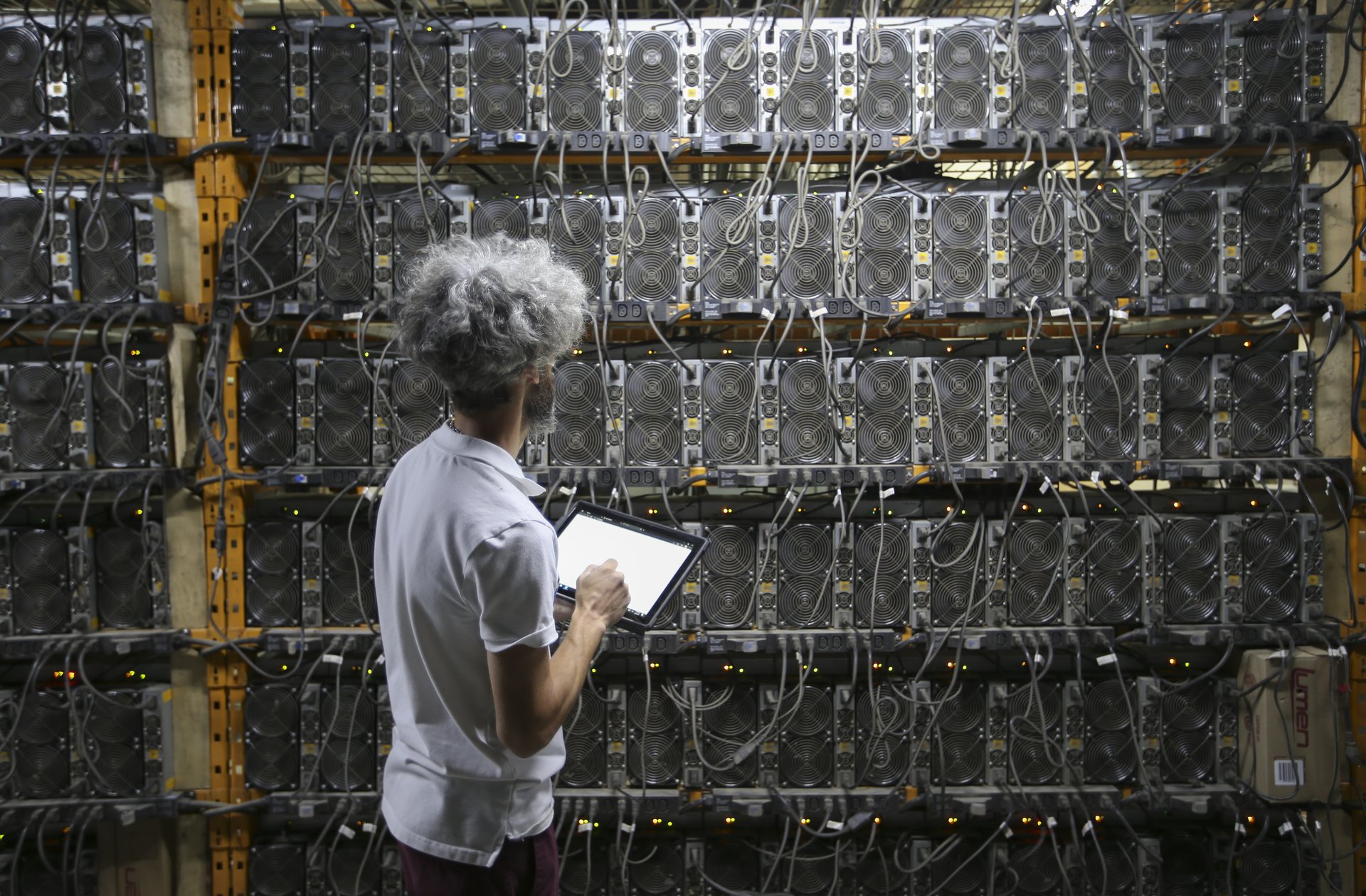
Good morning, Quartz readers!

Rates of resistance. Fed Chair Jerome Powell continues to indicate he’ll hold interest rates steady amid tariff-related uncertainties — despite a barrage of attacks from the president.
Powell play. The central bank chief also said JPMorgan Chase CEO Jamie Dimon’s prediction of a crack in the bond market is wrong; “Treasury markets are functioning well,” Powell said.
Heartland Express. Amazon is ramping up its same- and next-day shipping to more than 4,000 small towns across the U.S., part of $4 billion in planned infrastructure spending through 2026.
Wheel be there. Uber and Waymo have announced that they’re bringing hailable robotaxi rides to another U.S. city — Atlanta — as the partnership continues to expand across the country.
Chip off the old stock. CEO Jensen Huang just disclosed his first major Nvidia stock sale of the year, part of a move to potentially unload over $800 million in shares this year.
Livin’ la vida broka. One in four Americans said in a survey that they need to make at least $150,000 to “live comfortably,” and 80% said they don’t feel completely financially secure.
SPONSORED CONTENT BY KANTAR
 2-1.png)
AI is revolutionizing marketing, but what about innovation, a space where human curiosity and creativity have always led the way?
In today’s evolving landscape, brands that fail to harness the power of AI — or that lack the right expertise and data to do so — risk falling behind. This insightful booklet explores the powerful potential of AI and your innovation process, when applied in the right way.
The AI boom is chewing through electricity like a startup burns capital: quickly, expensively, and without brakes. According to new research from Deloitte, data centers powering generative AI could see their electricity demand skyrocket from 4 gigawatts today to 123 gigawatts by 2035. That’s like slapping an entire extra California onto the U.S. power grid, just for server farms.
But energy isn’t infinite, and neither is infrastructure. Building a data center takes a year or two. Building the gas plants and transmission lines to power it? That can take up to a decade. Utilities are already facing multi-year backlogs for grid connections and equipment orders, with gas turbines now delayed until at least 2029. The timeline mismatch is starting to look less like poor planning and more like a physics problem.
Deloitte’s report shows seven major bottlenecks — from supply-chain snarls and soaring construction costs to a nationwide shortage of skilled labor. Perhaps most worrisome: Data center operators and power companies aren’t even collaborating effectively. Just 15% of data center execs and 8% of utilities say their partnerships are “highly effective,” despite most agreeing that grid constraints are one of the sector’s biggest existential risks.
The investment floodgates are open — electric and gas utilities plan to spend over $1 trillion in the next five years, while tech giants may hit that same mark even faster. But even as companies try to outspend the bottlenecks, regulators are lagging behind, pipelines are tapped out, and cybersecurity threats loom over a deeply globalized supply chain. Still, there’s a glimmer of optimism: Many executives believe AI itself could help optimize the grid and make data center operations more flexible.
If nothing else, this crisis is forcing long-siloed industries to collaborate in ways that could reshape infrastructure development for decades to come — assuming they can get the power to stay on. Quartz’s Jackie Snow has more on the race to build faster than the power can flow.
The housing market is coming down from its pandemic high — and fast. Home prices rose just 2.7% in April, the weakest gain since mid-2022, according to the latest S&P Case-Shiller Index. That’s a step drop from March’s 3.4% and suggests that the spring’s real estate bounce may already be losing steam.
The slowdown is broad-based: Metros from San Francisco to Phoenix are flatlining or dipping, while pandemic darlings such as Tampa and Dallas are backsliding. Meanwhile, stalwarts such as New York, Chicago, and Detroit are suddenly the cool kids again. “This market cycle has upended regional dynamics,” said S&P’s Nicholas Godec, noting that fundamentals are replacing FOMO as the driving force in real estate.
One big reason buyers are backing off? Mortgage rates. The average 30-year fixed is hovering around 6.6%, and that’s after touching 7% in May. First-time buyers — once a market lifeline — made up just 30% of purchases last month, down from a historic 40%, as higher rates price them out faster than a bidding war. But even with fewer buyers, prices aren’t in freefall. Why? Supply’s still tight, and homeowners with 2% pandemic mortgages aren’t budging.
Still, Redfin says we’ve hit a turning point: Sellers now outnumber buyers three to one, a reversal from the bidding-war era. If the trend holds, prices could slip 1% by late 2025. So yes, the market’s cooling — but it’s not freezing. It’s more of a mild economic hangover than a housing horror story. Unless, of course, you’re a first-time buyer with big dreams and a 7% rate. Quartz’s Niamh Rowe has more on the price of waiting, wishing, and refinancing.
SPONSORED CONTENT BY KANTAR
 2-1.png)
AI is revolutionizing marketing, but what about innovation, a space where human curiosity and creativity have always led the way?
In today’s evolving landscape, brands that fail to harness the power of AI — or that lack the right expertise and data to do so — risk falling behind. This insightful booklet explores the powerful potential of AI and your innovation process, when applied in the right way.
🧑🎓 Over 2 million student loan borrowers could soon have their wages docked
🍩 McDonald’s and Krispy Kreme are ending their partnership — which never really started
🍟 These states spend the most (and least) money on fast food
🧓 Some states — like these five — offer the best quality of life for older Americans
Our best wishes on a safe start to the day. Send any news, comments, and more to [email protected].

New housing data reveals a nationwide slowdown, while pandemic-era regional trends reverse
The U.S. housing market is showing signs of a slowdown, as increased inventory and flagging buyer demand begin to temper home prices nationwide.
Prices rose just 2.7% year-over-year in April, according to the latest S&P CoreLogic Case-Shiller Home Price Index released Tuesday. That’s down from the 3.4% annual gain recorded in March and marks the smallest price growth since mid-2022. It's also worth nothing that much of the price appreciation occurred over just the past half-year, buoyed by the typical springtime surge in real-estate activity.
The downturn was evident across both the 10-city and 20-city composites tracked by S&P, with prices in many metro areas now well below their recent highs.
New York led the nation with a 7.9% annual increase in home prices, followed by Chicago at 6% and Detroit at 5.5%.
These gains contrast with the early pandemic years, when demand for warm, southern cities was surging, leading to the strongest appreciation.
Now, some of those previously booming markets are witnessing a pullback. Homes in Tampa dropped 2.2% in value from a year ago, while Dallas saw a slight 0.2% decline. San Francisco prices remained largely unchanged, and both Phoenix and Miami posted modest gains of just above 1%.
“This market cycle has upended regional dynamics,” said Nicholas Godec, head of fixed income at S&P Dow Jones Indices, in a statement. “Popular destinations during the pandemic are now lagging behind, while traditional strongholds in the Midwest and Northeast are leading the charge. This shift points to a market increasingly guided by underlying economic fundamentals rather than speculative buying.”
Moreover, the S&P’s index slightly lags behind real-time indicators, however, as it reflects a three-month moving average ending in April. Alternative data suggests prices could have cooled even more: real estate analytics firm Parcl Labs, for instance, indicates that prices are now flat compared with last year.
The key reason for the slowdown: Borrowing costs remain stubbornly high. The average 30-year fixed-rate mortgage rate exceeded 7% last month, and currently hovers around 6.6%.
Rates have approximately doubled since 2016, which adds thousands of dollars to annual mortgage payments, weighing on demand.
Borrowing costs appear to affect first-time buyers most. This demographic made up just 30% of home purchases in May—well below the historical average of 40%, according to the National Association of Realtors.
Still, a Redfin report published last month found that the U.S. housing market has undergone an unprecedented shift: Sellers now outnumber buyers by approximately 490,000.
The report said that sellers now exceed buyers by 3-to-1, a stark contrast to the seller-favored conditions of recent years. It forecast that if current trends persist, home prices could decline by 1% by the end of 2025, on average.
Despite the price-growth slowdown, analysts see little risk of a dramatic downturn similar to the housing collapse of the late 2000s, as the number of homes on the market remains lower than pre-pandemic norms.
“There’s still a deep shortage of housing,” Godec noted. “Many current homeowners are holding onto ultra-low mortgage rates from the pandemic, and new construction is falling short of what's needed. This mismatch between supply and demand is preventing a steep drop in prices.”
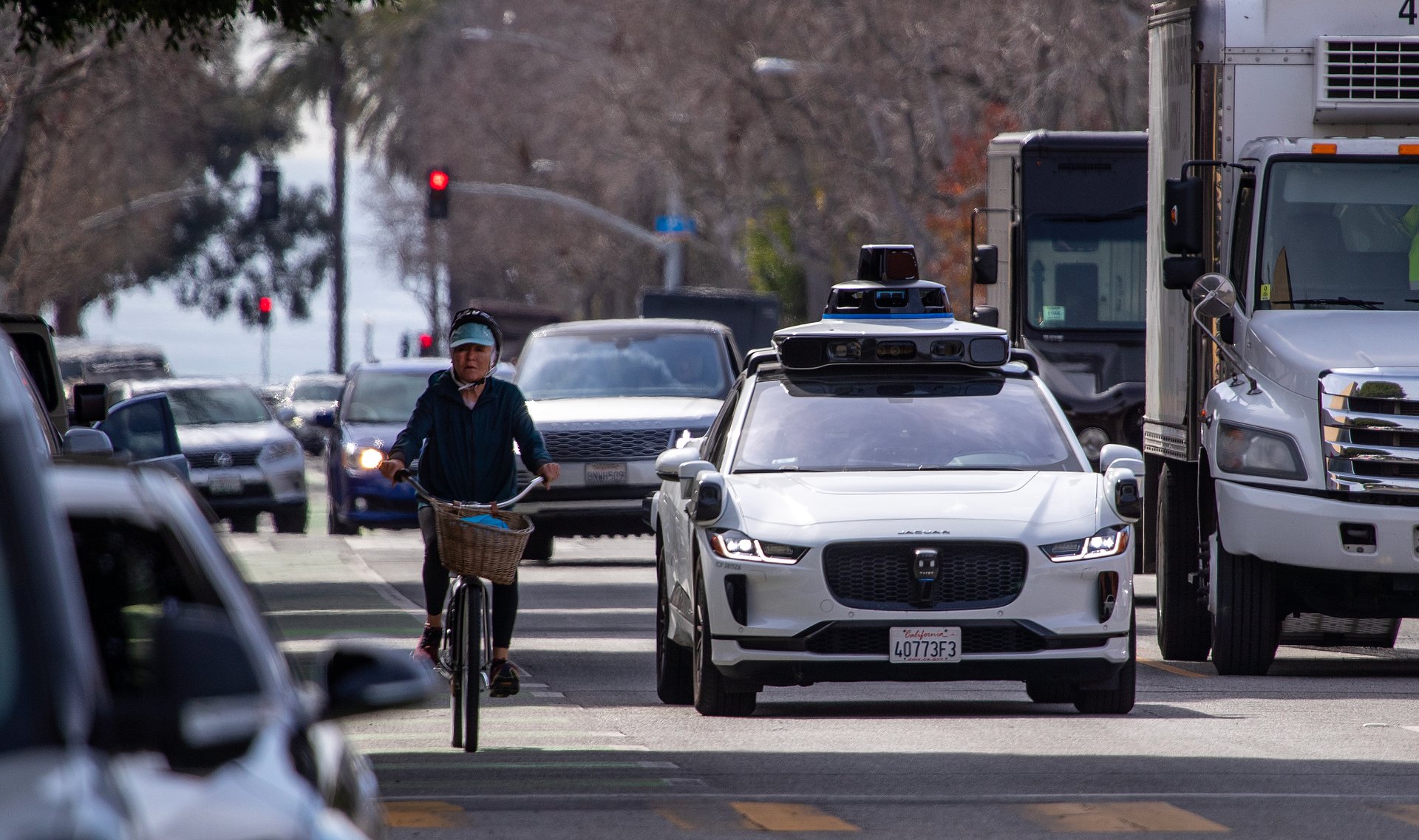
Uber currently handles 1.5 million autonomous rides annually — a number that should rise quickly
Uber users in Atlanta can now request a Waymo robotaxi through the app, marking the latest expansion of the "Waymo on Uber" partnership.
The service debuted in Phoenix, Arizona in 2023, followed by an expansion to Austin, Texas earlier this year. And now it’s also available across a 65-square-mile area of metro Atlanta, the companies announced Tuesday.
When matched with a Waymo vehicle, users will have the option to accept or switch to a human driver. Once a Waymo arrives, passengers will use the Uber app to unlock the doors, open the trunk, and begin their trip. Fares will align with those of UberX, Comfort, and Comfort Electric rides, making the experience competitively priced with human-driven alternatives.
The “Waymo on Uber” partnership is expected to boost AV ride volume and visibility for both Uber and Alphabet, Waymo’s parent company, as they scale their self-driving ambitions. Uber currently handles 1.5 million AV rides annually, including both passenger and delivery trips, after collaborating with 18 AV firms. Waymo reports giving about 250,000 paid robotaxi rides each week in cities like Phoenix, Los Angeles, San Francisco, and Austin.
Waymo’s initial Atlanta fleet consists of several dozen vehicles, though a company spokesperson confirmed plans to eventually expand the shared Atlanta-Austin fleet into the hundreds.
Operational responsibilities are divided between the two companies. Uber oversees logistics — like vehicle charging, cleaning, and maintenance — and integrates robotaxi access into its platform. Waymo, meanwhile, manages the autonomous technology itself, along with real-time monitoring, roadside support, and rider assistance when needed.
The Atlanta expansion coincides with Tesla unveiling its first robotaxi pilot in Austin, Texas, over the weekend — complete with human safety monitors, geofenced routes, and a wink at meme culture with a $4.20 fare. CEO Elon Musk is pushing Tesla into the AV race, betting that the technology will be the future of driving. Musk also needs robotaxis to achieve what EVs no longer reliably can — drive high growth, justify a sky-high valuation, and restore Musk’s reputation as an innovator.
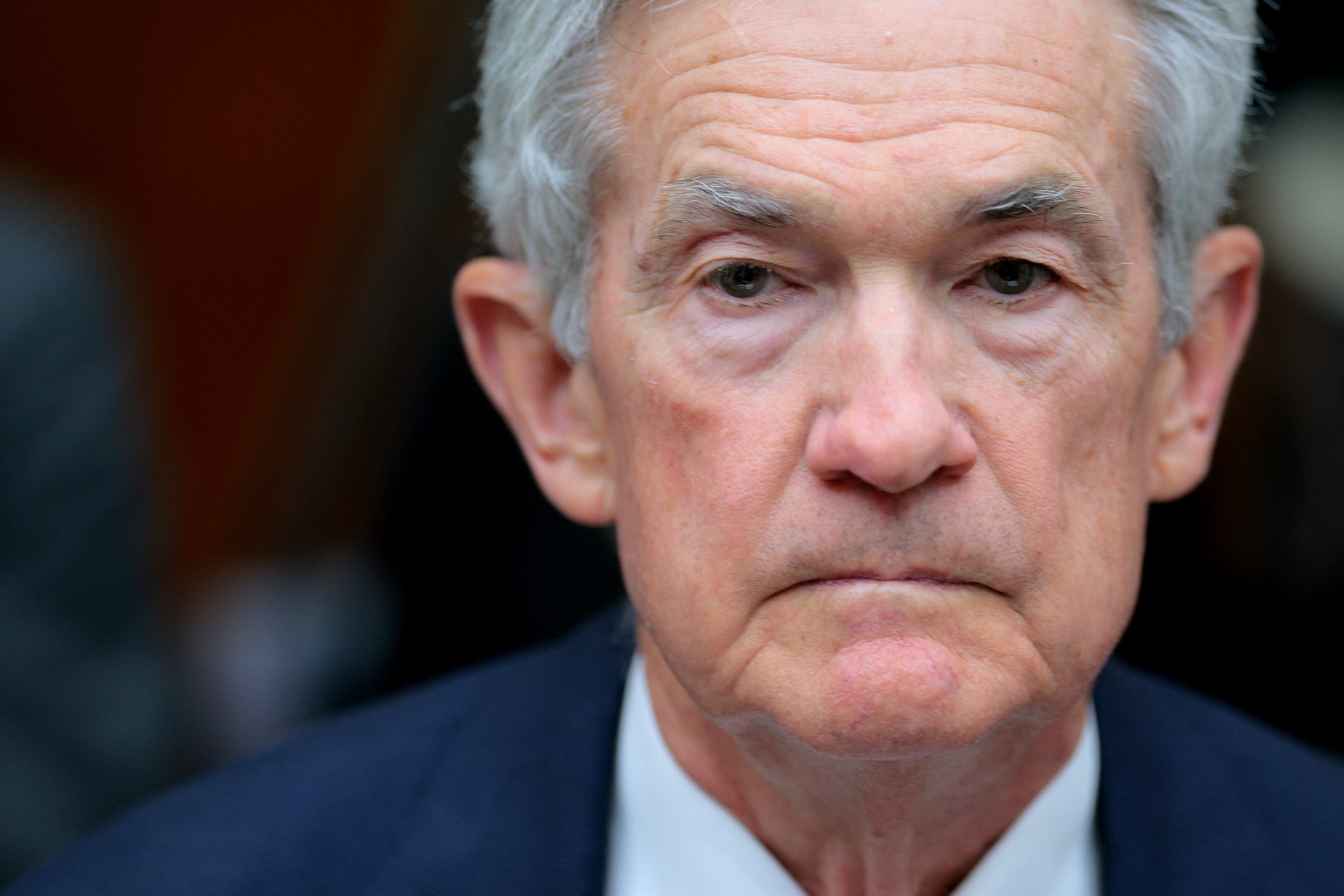
Jamie Dimon has warned of a backlash in financial markets as a response to the U.S's worsening fiscal picture
Federal Reserve Chair Jerome Powell isn't sold on JPMorgan Chase CEO Jamie Dimon's warning about a coming backlash in bond markets that could roil the U.S. economy.
During testimony Tuesday before the House Financial Services Committee, Republican Rep. Tim Moore of North Carolina asked Powell about whether he agreed with Dimon's remarks last month.
"I don't want to say things like that," Powell responded. "I don't think that's something that's happening. Treasury markets are functioning well. And normally, and they did function through a period of pretty substantial stress, and as you pointed out.. they're focusing well now."
In late May, Dimon forecasted a backlash in financial markets as a response to the U.S's worsening fiscal picture.
“You are going to see a crack in the bond market, OK?” Dimon said at the Reagan National Economic Forum in California. “It is going to happen.”
Republicans in Congress are in the middle of muscling through President Donald Trump's $4 trillion tax-and-spending package over unified Democratic opposition. It's only partly paid for, and that has amplified worries among economists across the ideological spectrum about the growing size of the U.S. national debt.
Trump's "Liberation Day" tariffs in April sparked volatility in bond markets that led him to scale back those levies within days of the rollout. Unnerved investors had demanded higher returns in exchange for buying riskier bonds.
Since then, Treasury bonds have remained steady, and the 10-year yield stood at 4.3% on Tuesday. During his testimony, Powell also reaffirmed the U.S. dollar's strength as the world's reserve currency and called it "the place where people want to be."
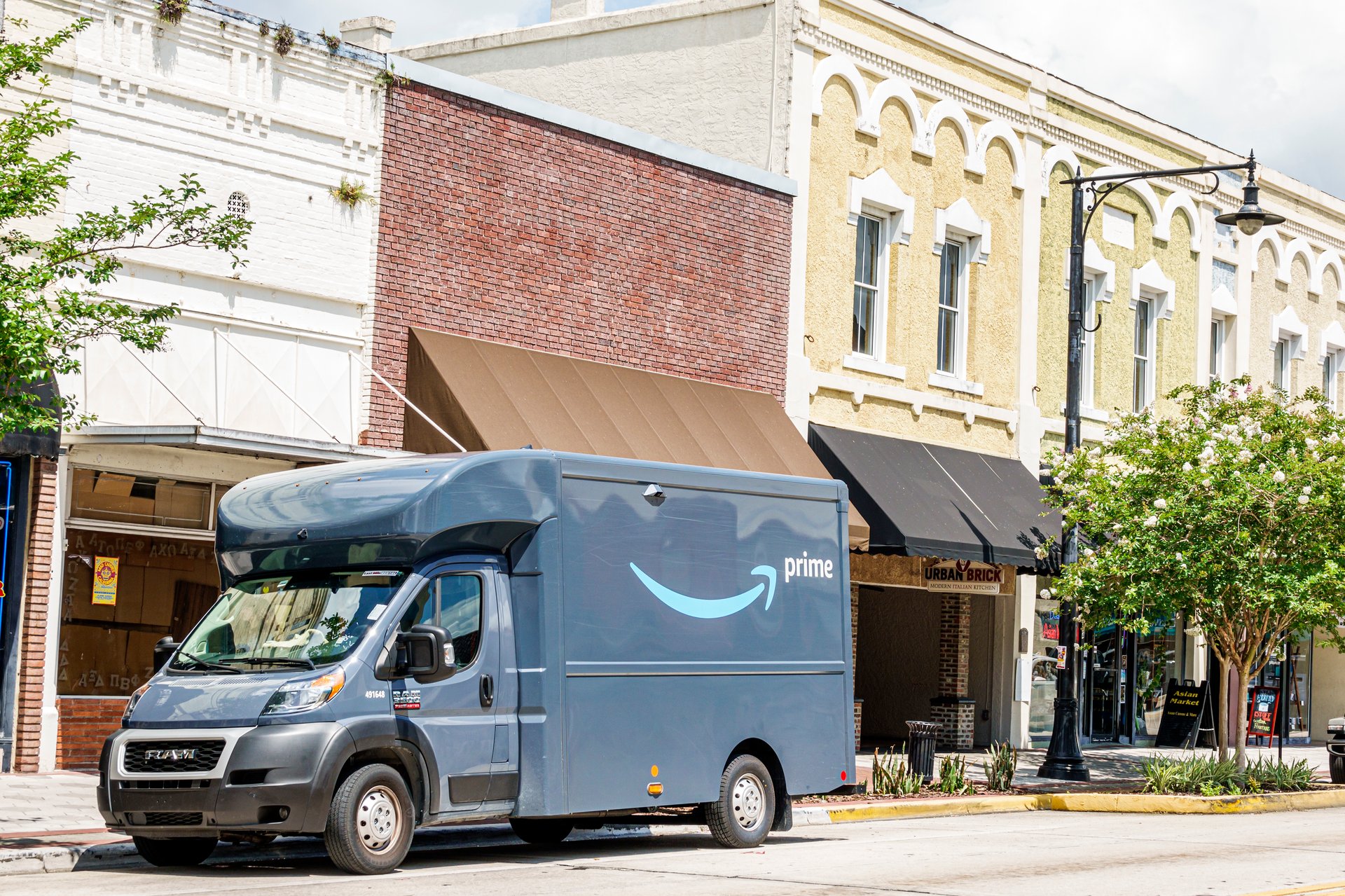
With a $4 billion investment, the company is pushing faster fulfillment into small-town America — reshaping competition for the final mile
Amazon is speeding up delivery in the last places it hasn’t already. The company announced Tuesday that it’s rolling out same-day and next-day Prime shipping to more than 4,000 small towns and rural communities across the U.S. — part of a broader effort to close delivery gaps in areas that have lagged behind major metros.
The expansion is backed by more than $4 billion in planned infrastructure investments through 2026. That includes building or retrofitting dozens of rural delivery stations and bringing fast fulfillment to an additional 13,000 ZIP codes — covering more than half of the U.S. population and adding capacity for up to a billion additional packages a year. That means packages are coming to towns like Havre, Montana, and Sweetwater, Texas, as quickly as they already do to Seattle or Brooklyn.
Amazon says the rollout will support about 100,000 jobs tied to its delivery network, including drivers, warehouse staff, and contractors.
For years, Amazon’s logistics strategy has focused on population centers, where density makes same-day delivery more cost-effective. But this move shifts the company’s attention to markets where competition is lighter and shipping times remain inconsistent. FedEx and UPS have both scaled back rural service in recent quarters, citing rising costs. Walmart is still expanding its fulfillment capabilities but hasn’t matched Amazon’s footprint.
“Everybody loves fast delivery,” Doug Herrington, CEO of Worldwide Amazon Stores, said in the company’s announcement. “So, whether you live in Monmouth, Iowa or in downtown Los Angeles, now you’re going to have the same fantastic Amazon customer experience: the ability to get the wide variety of items you need to keep your household running every day.”
But the expansion also serves a clear commercial purpose: Internal data shows that faster delivery directly correlates with higher purchase frequency among Prime members — and the company says that early results in its rural pilot areas seem to back that thesis.
According to Amazon, in more than 1,000 small towns and rural communities where same-day and next-day Prime delivery is already live, customers are shopping more frequently and buying more household essentials. According to the company, over 90% of the top 50 items being reordered fall into Amazon’s “everyday essentials” category, a sign that speed isn’t just driving impulse buys but changing how rural shoppers restock core goods — which Amazon sees as a long-term behavioral change rather than a short-term bump.
That behavior shift helps explain why Amazon is doubling down. Faster delivery isn’t just a perk — it’s a way to move deeper into consumers’ routines. By matching or beating the convenience of a quick trip to the store, even in low-density markets, Amazon is betting that same-day logistics can unlock a new tier of Prime loyalty in places it hasn’t fully penetrated before.
To make the economics work, Amazon is relying on predictive inventory systems to stock the right products at the right time. Local stations will be preloaded with region-specific items — pet supplies in Cedarbug, Wisconsin, school gear in Dahlonega, Georgia — based on demand signals. It’s a model designed to shorten delivery windows without overextending fulfillment infrastructure.
Internationally, the company is following a similar playbook. Amazon plans to invest more than £43 billion (roughly $54 billion) in the U.K. over the next three years, with a major focus on logistics, data centers, and AI infrastructure. That includes four fulfillment centers, over 100 upgrades to existing facilities, and a major studio redevelopment for Amazon MGM. The new commitment brings Amazon’s total U.K. investment since 2010 to over £56 billion — about $71 billion.
The timing comes as Amazon tries to squeeze more growth from its core retail business while fending off rivals and cutting costs elsewhere. Prime membership has plateaued in many urban markets, and CEO Andy Jassy told shareholders in April that delivery speed remains one of the most important levers for boosting conversion and engagement. Faster service, he said, makes customers shop more often — and builds stickier relationships with Prime.
Still, the rural push may carry consequences for the very communities it aims to serve. Small retailers, long reliant on proximity and personalized service to stay competitive, may find themselves squeezed by rising customer expectations they can’t match. In areas where Amazon was once a secondary option, it could quickly become the default.
And soon, the country road could become Amazon’s newest fast lane.

Krispy Kreme is pulling its doughnuts from McDonald’s restaurants as the collaboration takes a financial toll
Krispy Kreme is pulling its doughnuts from McDonald’s restaurants across the U.S.
The partnership, which extended Krispy Kreme products to approximately 2,400 McDonald’s locations, ultimately didn’t make economic sense for the doughnut company, it announced Tuesday.
“We worked closely with McDonald’s to scale this initiative, but we weren’t able to align costs with customer demand,” CEO Josh Charlesworth said in a press release. “In the end, the economics just didn’t work for us.”
The Krispy Kreme–McDonald’s collaboration launched in March 2024 as part of the North Carolina-based doughnut company's broader effort to grow its national footprint by expanding availability beyond its own stores. The doughnuts were set to reach all 13,500 U.S. locations by the end of 2026. At the time, that news sent Krispy Kreme stock soaring by more than 39%, the largest one-day rise since going public in 2021.
But signs of strain became visible last month when Krispy Kreme said it was reconsidering the rollout timeline and trying to reshape the arrangement into a more financially viable model. The company’s stock fell 25% following the announcement.
Profitability appears to be underscoring the backtrack. Krispy Kreme reported a net loss of $33 million for the quarter ended March 30. To achieve the nationwide rollout, the company invested in expanding capacity quickly. This weighed on profits, with the firm posting three quarterly net losses in the past year. In March, the company also withdrew its full-year forecast and suspended its quarterly dividend in response to economic uncertainty and cost pressures.
“We appreciated the partnership and were happy with the product Krispy Kreme delivered,” Alyssa Buetikofer, chief marketing and customer experience officer at McDonald’s USA, said in Tuesday's release. “But it also needed to be financially sustainable for them.”
Looking ahead, Krispy Kreme said it would concentrate on expansion through high-traffic retail channels and global franchises that require less capital investment.
For McDonald’s, the doughnut offering made up only a minor portion of its breakfast lineup, according to both companies. The fast-food giant, headquartered in Chicago, reaffirmed its commitment to breakfast as a key growth area and emphasized its focus on value and convenience for morning customers.

And less than 30% of U.S. adults believe the American Dream is attainable in today’s economy
With an affordability crisis affecting all 50 states, one in four Americans now feels like they need to make $150,000 or more to “live comfortably.”
The results come from a Bankrate survey published Monday, in which 77% of U.S. adults also said they don’t feel completely financially secure. And only 29% of U.S. adults said they believe "their version of the 'American Dream' is likely for them in today’s economy."
Bankrate said the results come as inflation continues to erode households’ spending power, pointing out Bureau of Labor Statistics data that shows a $100,000 salary in January 2020 had the same buying power as $124,353 in April 2025.
“Many people need to spend more and more every year,” Wookjae Heo, an assistant professor of financial counseling and planning at the Purdue University College of Health and Human Sciences, told Bankrate. “However, their income has not increased a lot. Most people’s salary is [static].”
Sarah Foster, a Bankrate reporter, said it's because of these rising costs that "now, simply living comfortably feels like the new aspiration, as economic challenges make financial stability a rare luxury."
In fact, almost one in three of the adults surveyed believe they "likely will never" be completely financially secure.
In the past two years, the number of Americans who feels financially secured has declined, Bankrate said.
Among generations, its Gen X (ages 45-60) who feel the least financially secure, with only 16% saying they are. Baby boomers (ages 61-69) report feeling the most financially secure, at 31%.
“Most of us know comfortability when we see it," Foster said. "It’s a financial sweet spot that allows us to cover our bills, sock cash away for retirement or emergencies, conquer debt — or dodge it entirely — and still have enough wiggle room for the occasional indulgence. Times have shifted.”
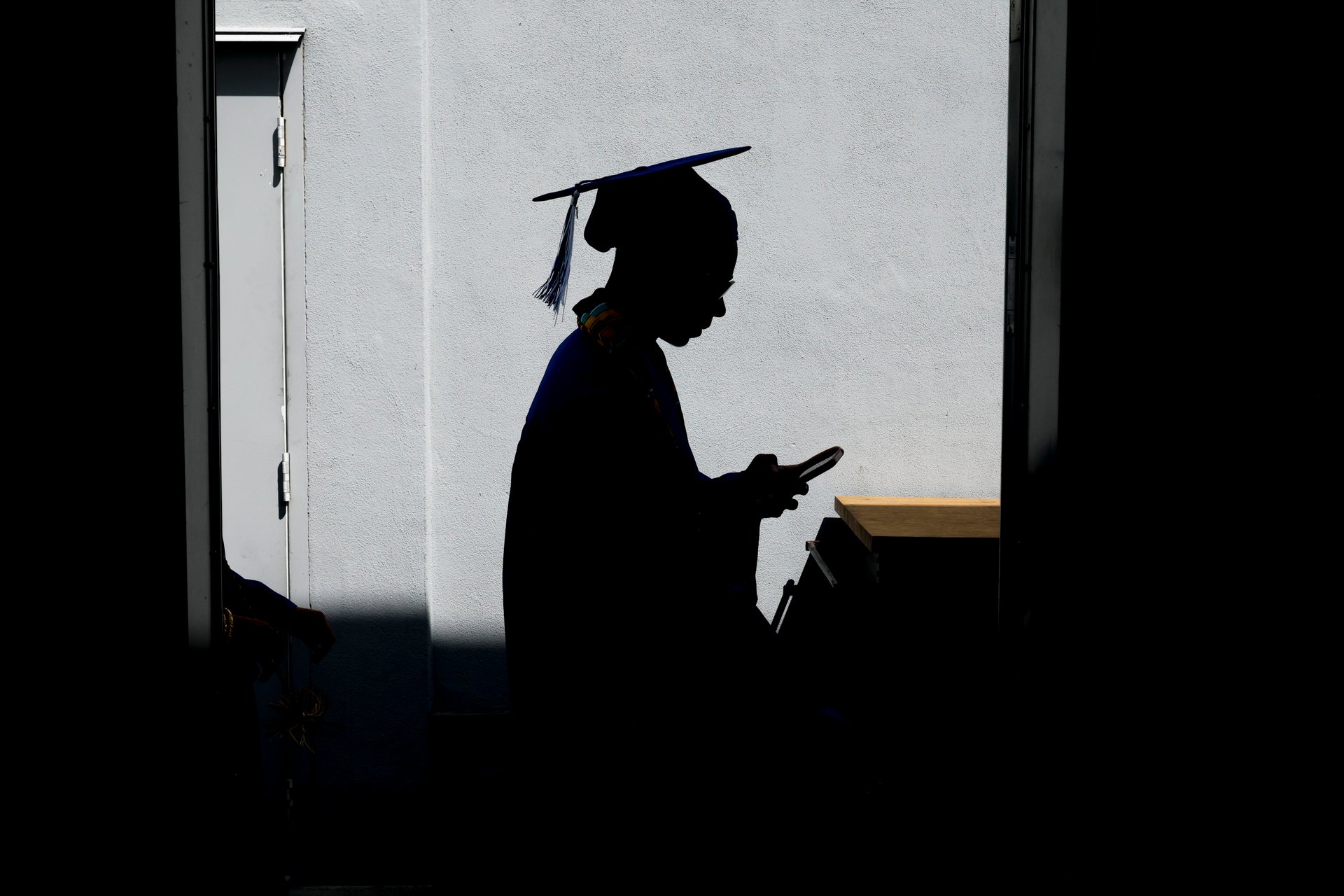
The Department of Education restarted debt collection activities in May, marking the first time since before COVID that it has taken such measures
Millions of Americans could see a portion of their paychecks automatically withheld this summer, as a consequence of falling behind on federal student loan payments.
The Department of Education restarted debt collection activities in May, marking the first time since before COVID that it has taken such measures. Officials sent notices to borrowers that failure to resume payments could result in seized tax refunds and reduced federal benefits.
Wage garnishment is next, they warned. Starting "later this summer," borrowers who default may have up to 15% of their earnings automatically deducted by the Treasury Offset Program, unless they repay or rehabilitate their loans. Social Security garnishment remains paused as of June.
Enforcement is set to affect millions of borrowers. Roughly 6 million are now over 90 days late on their loans, following the end of pandemic-era forbearance, according to new data from credit bureau TransUnion, published by The Wall Street Journal on Tuesday. Close to 2 million of those borrowers are expected to hit default status in July — a sharp rise from earlier projections of 1.2 million in May. Another 3 million people are on track to default by September.
The surge in late payments may be driven both by communication lapses with loan servicers and growing financial strain on households, Joshua Turnbull, who leads consumer lending at TransUnion, told the Journal. Federal student loans are marked as in default after nine months of nonpayment.
Officials are continuing outreach efforts to encourage repayment and warn of the risks. Altogether, federal student loan debt now tops $1.6 trillion, spread across more than 43 million borrowers.
Loan payments were suspended during the pandemic, and in 2023, the Biden administration offered a temporary 12-month buffer — called the “on-ramp” — which shielded borrowers from credit damage due to missed payments. That protection expired last fall.
Since then, many who’ve fallen behind have already begun to see the consequences. On average, delinquent borrowers have lost about 60 points from their credit scores. As of April, only about 9% of those behind on payments had caught up.
The New York Federal Reserve projects that over 9 million borrowers will see their credit scores fall in 2025, a reflection of the growing strain within the student loan system. The Reserve estimates that more than two million borrowers have already experienced score declines of at least 100 points, as of the first quarter of 2025, and more than 5 million borrowers are currently in default.
The timing is especially challenging for younger borrowers. Unemployment among college graduates ages 20 to 24 has risen to 6.6%, the highest level in a decade outside of the pandemic, as artificial intelligence puts a strain on the supply of entry-level jobs.
Combined with proposed cuts to federal student aid in President Donald Trump’s broader budget plan, the resumption of collections signals a post-pandemic mood shift in Washington, toward aggressive enforcement.
“Borrowing money and failing to pay it back isn’t a victimless offense,” Education Secretary Linda McMahon wrote in a recent Wall Street Journal op-ed defending the Trump administration’s resumption of collections. “Debt doesn’t go away; it gets transferred to others.”